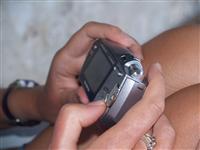 LEARN THE CRAFT & CREATE GREAT PHOTOS!
LEARN THE CRAFT & CREATE GREAT PHOTOS!
This detailed beginners course will show you the way. You will put into practice what we teach you about film speed, exposure and composition of photographs, developing your own style along the way! Professional photographers will study your photos and advise you on how to improve them using tried and tested photographic techniques.